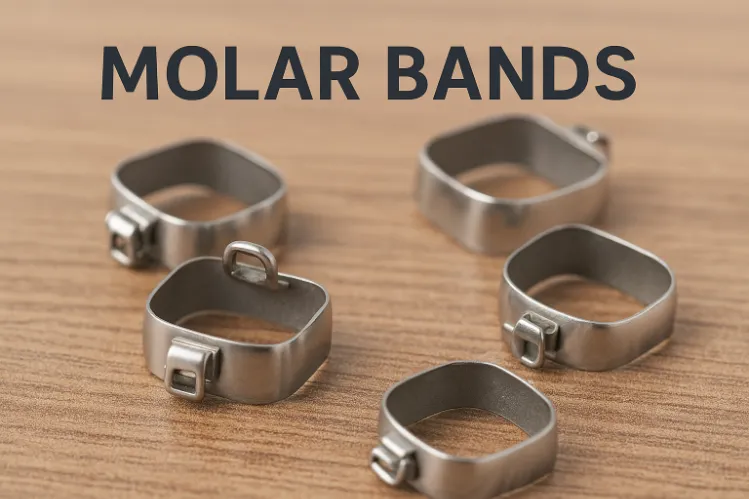
Clear aligners have become a popular orthodontic choice compared to traditional braces due to their convenience and discreet design. Unlike traditional braces, they fit seamlessly into your lifestyle, allowing you to maintain your daily routine with minimal disruption. However, consistent wear and proper care are essential to achieving the best results.
If you’re starting your journey with clear aligners, this blog is for you. Let’s explore practical tips to integrate them into your daily routine, ensuring a smooth and effective treatment process.
Wearing clear aligners requires a few changes to your daily habits. While they are designed to be simple and user-friendly, maintaining consistency is key to keeping your treatment on track. Understanding how aligners fit into your routine is the first step toward success.

Clear align ers need to be worn for 20–22 hours per day to be effective. This leaves just enough time to remove them for meals, drinks (other than water), and oral hygiene. Consistent wear ensures steady progress and helps you stay on schedule.
Daily wear consistency ensures that your teeth move as planned, keeping your treatment timeline on track.
One of the biggest adjustments with aligners is removing them before eating or drinking anything except water. This prevents damage to the aligners and ensures they stay clear and free from stains.
By following these simple habits, you can keep your aligners in great condition and avoid unnecessary wear and tear.
You can read our blog on 10 Common Mistakes to Avoid During Clear Aligner Treatment.
Proper care of your clear aligners is essential to ensure they remain effective and hygienic. Cleaning your aligners regularly and handling them with care will help you achieve the best results while maintaining oral health.

Keeping your aligners clean prevents bacteria buildup, which can cause bad breath and stains. A consistent cleaning routine ensures your aligners remain clear and odor-free.
Regular cleaning keeps your aligners fresh and comfortable to wear.
When you’re not wearing your aligners, proper storage is crucial to avoid damage or loss.
Safe storage ensures your aligners stay clean and protected throughout your treatment.
Maintaining proper oral hygiene becomes even more essential when you are wearing clear aligners. Since aligners cover your teeth for most of the day, leftover food particles or plaque can become trapped, increasing the risk of cavities and gum issues. Incorporating a consistent oral care routine will make sure your teeth stay healthy throughout the treatment.

Clear aligners require a higher level of oral care to keep your teeth and gums healthy. Food particles left behind after meals can get trapped under the aligners, causing bad breath or even tooth decay. Proper brushing and flossing techniques will make sure your smile stays clean and protected.
Taking time to clean your teeth thoroughly will make sure your aligners fit comfortably and remain effective.
Oral hygiene isn’t just about brushing and flossing; rinsing your mouth throughout the day can also help maintain freshness and avoid dry mouth. Cleaning your mouth after meals, even when you can’t brush, will make sure food particles don’t linger and cause discomfort.
Regular maintenance will make sure you avoid issues like bad breath or bacterial buildup.
Consistency is one of the most important aspects of aligner treatment. Wearing your aligners for the prescribed 20-22 hours daily ensures steady progress and timely results. Developing habits and using helpful tools will make sure you stick to your treatment plan.

Tracking your aligner wear time can help you stay consistent and make sure you meet the daily requirements. While it might feel challenging at first, using tools and reminders can make this process easier.
By incorporating these habits, you will make sure your aligners are worn as directed, avoiding delays in your treatment.
Social situations like dining out or attending events can sometimes make it harder to stick to your routine, but being prepared will make sure you stay on track without stress.
These small steps will make sure you enjoy your time out while keeping your treatment consistent.
Each new aligner tray is designed to make gradual changes to your teeth. Switching to a new tray can sometimes feel uncomfortable, but following the right techniques will make sure the adjustment period is as smooth as possible.
When you switch to a new set of aligners, it’s normal to feel slight pressure or discomfort. This is a sign that the aligners are working. However, there are ways to ease this transition and make sure the adjustment doesn’t interfere with your daily life.
These steps will make sure your new aligners fit comfortably as your teeth adjust.
Aligners must be worn according to the schedule provided by your orthodontist, usually switching to a new tray every 1-2 weeks. Following this schedule will make sure your treatment stays on track.
By following your treatment plan closely, you will make sure your aligners are effective and your progress is steady.
Wearing clear aligners consistently for months requires patience and commitment. Staying motivated throughout the process is key to ensuring you achieve your desired results. A few small habits can make your aligner journey more enjoyable and keep you on track.
Watching your progress unfold can be incredibly rewarding. Many aligner brands offer tools that allow you to see the transformation of your teeth over time.
Tracking progress not only helps you stay focused but also builds excitement about your final results.
It’s normal to feel a little impatient during aligner treatment, but keeping your end goal in mind will help you stay consistent. Remember, every small effort contributes to achieving your dream smile.
Staying positive and focused will make the treatment process feel less overwhelming.
Integrating clear aligners into your daily routine may require some initial adjustments, but consistency and proper care will make the process smoother over time. From maintaining oral hygiene to tracking your wear time, small efforts can lead to big results. With patience and commitment, you’ll achieve the smile you’ve always wanted.
Remember, your orthodontist is there to support you. If you have questions or face challenges during your treatment, don’t hesitate to ask for advice. By following your treatment plan and staying motivated, you’ll complete your journey successfully and enjoy a confident, healthy smile.




Curated the best for your knowledge
 How Molar Bands Work in Braces and Retainers to Keep Your Teeth in Line
How Molar Bands Work in Braces and Retainers to Keep Your Teeth in LineIf you’ve ever started orthodontic treatment, you already know there are a lot of tiny pieces involved. Wires, brackets, elastics, retainers, attachments… and then there are molar bands. They’re not as famous as braces themselves, but they play a surprisingly big role in keeping your smile moving in the right direction. Some people don’t really notice them. While others desperately want to know why that metal ring is even there. So let’s break it all down: what molar bands are, why orthodontists use them, and how they work in both braces and retainers. Plus, what you should expect throughout the process.
Read More.webp) Dental Bonding Cost: Prices, Process & What to Know
Dental Bonding Cost: Prices, Process & What to KnowIf you’re thinking about fixing a chipped tooth, closing a gap, or smoothing out uneven edges, dental bonding is often the easiest (and quickest) way to do it. And honestly? It’s one of the most budget-friendly cosmetic treatments out there, if you know what to expect. But here’s the part everyone worries about first: “How much does tooth bonding cost?” The short answer: it depends. The long answer: let’s break it all down so you actually understand where the price comes from, what you’re paying for, and whether bonding is the right fix for your smile.
Read More.webp) Mouthwash for Gums: What to Choose & Why
Mouthwash for Gums: What to Choose & WhyYou know the feeling when your gums suddenly have a meltdown? A little swelling, a little bleeding, and you are down the rabbit hole on Google at 3 a.m., trying to find the best mouthwash for gums. It happens. Gums can be finicky little guys. They deserve some love, some care, and sometimes a splash of minty freshness. But not all mouthwashes are created equally. Some are just flavored water, acting like they are helping. Some are awesome "fight germs" formulations that your dentist wishes everyone used. In this article we are going to break down what’s is the best mouthwash for your gums.
Read MoreQuick Links

Heading